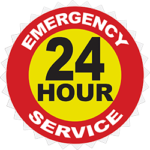When shopping for a new HVAC system in Houston, TX, you may not have given much thought into the different types of units available, or even realized that there were different types of HVAC’s to choose from in the first place. Well, you are not alone. It seems like the majority of people look at the systems that heat and cool our homes as complicated or unimportant when in all actuality, they are relatively easy to understand once you know some basics. To start, HVAC stands for Heating, Ventilation, and Air Conditioning. HVAC can be defined as the entire system that works together to make sure your indoor environment stays comfortable and consistent. These systems currently come in four main types, each having their specific pros and cons depending on your individual needs. Knowing the ins and outs of these systems will not only empower you as a home or business owner, but it will also make it easier for you to decide which HVAC system is right for you.
#1: Heating and Air Conditioning Split System
The most common and straightforward type of HVAC systems is the heating and cooling split systems. As the name implies, this system is actually split between two central units, one dedicated to heating and the other dedicated to cooling. With this type of HVAC, there will be an outdoor unit containing the condenser and compressor, and an indoor unit that includes the evaporator coil and blower that are often connected to a furnace or heat pump. HVAC split systems will typically contain:
- An outdoor unit that houses the condenser coil, compressor, electrical components, and a fan
- Refrigerant that circulates to and from the indoor and outdoor unit through a series of pipes called refrigerant lines
- An evaporator coil that usually sits above the indoor furnace
- A blower that sends warm air over the cold evaporator coil, absorbing heat from the air
- Ducts that are put in place to carry air throughout your house or business (the supply ducts pull air in, while the return ducts will blow air out)
- A traditional thermostat that manages the systems and sets your desired indoor temperature
- Optional indoor air quality accessories like humidifiers, purifiers, UV lamps, air scrubbers, etc. (even though most modern systems already contain these features as a means to combat dry and dirty indoor air)
#2: Hybrid Heat Pump System
Heat pumps are air conditioners that are also capable of working in reverse to efficiently heat your home. With hybrid heating and cooling systems, a heat pump is powered by electricity and used in conjunction with a furnace that burns natural gas, propane, or fuel oil. While these systems are similar to traditional split systems, their fundamental differences lie within their ability to diminish energy costs through their electric hybrid heating system. The capacity to switch between quick gas power to efficient electric allows homeowners to decide precisely how they want to heat their homes or businesses, which is why this hybrid system has made a name for itself among consumers. Ideally, a hybrid heat pump system will have:
- A heat pump that works to heat and cool the refrigerant
- A furnace with an evaporator coil for the conversion of the refrigerant and circulation of air
- Ductwork to effectively guide the air around your home or business
- A traditional thermostat for adjusting and controlling the HVAC system
- Optional accessories (similar to those of the heating and air conditioning split system)
#3: Ductless or Duct-Free Mini-Split Heat Pump
Ductless or duct-free mini-split heat pump HVAC systems are ultra-efficient and offer solutions for spaces where conventional duct systems are not always compatible. In most homes and businesses, about 20 percent of energy is wasted with ducted systems, making duct-free a proficient long-term money saver even though they tend to be more costly upfront. This type of system is made up of individual units in varying rooms that are installed directly to walls and usually connected to an outdoor compressor. Ductless mini-split systems will contain the following:
- A heat pump unit outdoors that includes the usual compressor, condenser, and fan
- A compact fan coil
- Tubing and wires for the refrigerant (only requiring a 3-inch hole) that connect the outdoor unit to the small fan coil
- A thermostat or remote-control panel
- The optional accessories outlined before that help clean the air before distribution
#4: Packaged Heating and Air Conditioning System
Packed heating and air conditioning systems are most ideal for homes or businesses that have limited space for all the various components that come with a split system. These unique, all-in-one HVAC units are easy to install and generally work just as well as their standalone counterparts. The main difference with packaged heating and air conditioning systems is that all the heating and cooling equipment will be placed together or “packaged” into a single standalone unit, meaning there won’t be any indoor devices that connect to it. Due to their compact design, packaged heating and air conditioning systems can be used in confined spaces and are energy-efficient when it comes to heating or cooling very large areas. Packaged heating and air conditioning systems will come with:
- The air conditioning and heating pump with the evaporator and fan coil (all combined into a single unit)
- A thermostat or control interface for complete and compact control over the system
- Optional air quality improvers (as previously mentioned, air purifiers, cleaners, ventilators, or UV lamps)
This type of system is most beneficial for areas where warmer climates are typical, as the heat is electrically generated and may fall short in comparison to other, more powerful heating options. With that being said, you can buy advanced combo units that are able to utilize both gas and electric heat output in order to be more powerful and energy efficient when needed. If you are unsure if you currently have a packaged heating and air conditioning system, some indications will be:
- The unit appears to be larger than a split air conditioner condenser
- Installation is outside the home, either on the roof/side of your home or business with no indoor components
- It is connected to the unit using large rectangular or circular ductwork
When dealing with such a significant investment, it’s essential to know all your options. We hope this information has helped you familiarize yourself with the basic terminology needed to express your home or businesses individual needs and your own basic comfort levels. This information can also be helpful if you need to contact a professional if problems arise with your existing system. If you feel like you still need advice on which HVAC system is right for your home or business, or you simply need HVAC repairs done from a company you can trust, contact our seasoned professionals at Air Innovations LLC in Houston, TX today for assistance. (281) 860-2189








